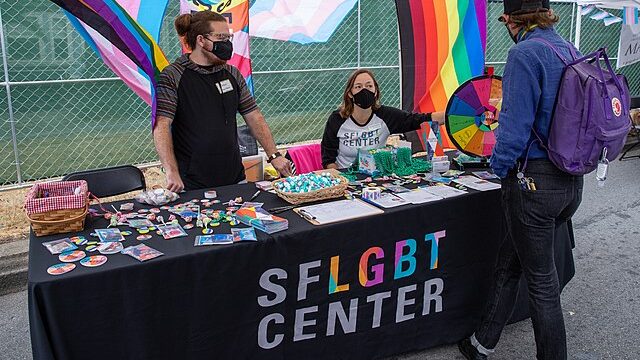A Brief History of LGBT Resource Centers
As the patterns of national culture have grown more accepting of trans and queer spectrum identities and people, there has been an increase in the visibility of these identities on college campuses (Rankin, Garvey, and Duran 2019). One of the primary practices colleges have used to respond to this increase is the emergence of college-run centers devoted to gender, sexuality, and LGBTQIA+ identity.

As of 2020, there were at least 273 centers in operation in the United States (Bazarsky et al., 2022). These centers vary widely in name, origin, and mission statement, but generally aim to serve the needs of those whose gender and/or sexual identity results in marginalization or discrimination through support and advocacy (Marine and Nicolazzo, 2014). In recent years, it has also become more common for LGBT centers and their employees to fall under more general diversity, equity, and inclusion divisions (Bazarsky et al., 2022).
The roles and goals of these centers have evolved substantially over time since the founding of the first professionally staffed center in 1971, the University of Michigan’s ‘Lesbian-Gay Male Programs Office’ (Marine and Nicolazzo 2014: Self 2015).
Earlier centers tended to serve primarily as places for social support and locations for activism and policy development as they functioned in a world with little to no legal protections for LGBTQ+ individuals. Modern centers tend to focus more on counseling, support, education, climate assessment, and community building rather than activism and exist primarily as ‘safe spaces’ for LGBTQ+ students (Marine and Nicolazzo, 2014). These centers play an important role in providing services and serve as a place for queer community development and aim to foster a positive campus climate and promote the success of LGBTQ+ students. The existence of these spaces can also serve as a powerful affirmation that the lives and successes of this historically disadvantaged and overlooked population matter (Fine 2012). The events and activities they organize have also been found to be important to a student’s sense of belonging and connection, which can, in turn, positively affect their learning and development (Beemyn et al. 2005). Furthermore, identity-based spaces are important sites for identity development as they act as influential spaces for finding role models and support networks (Beemyn 2019).